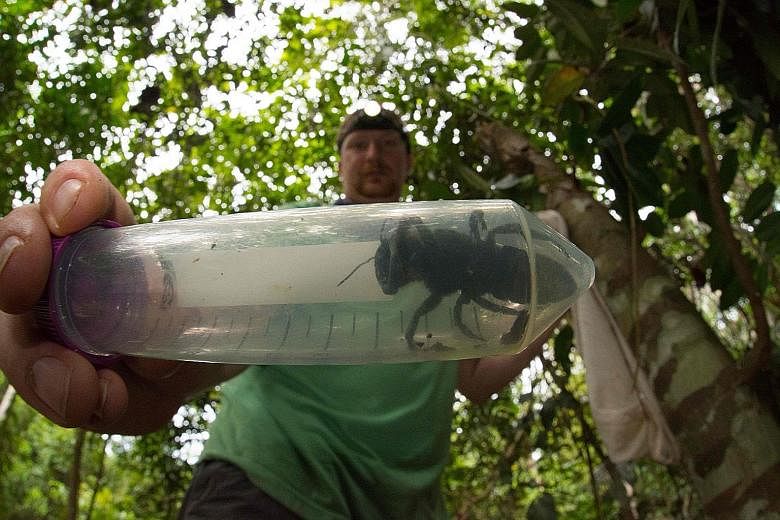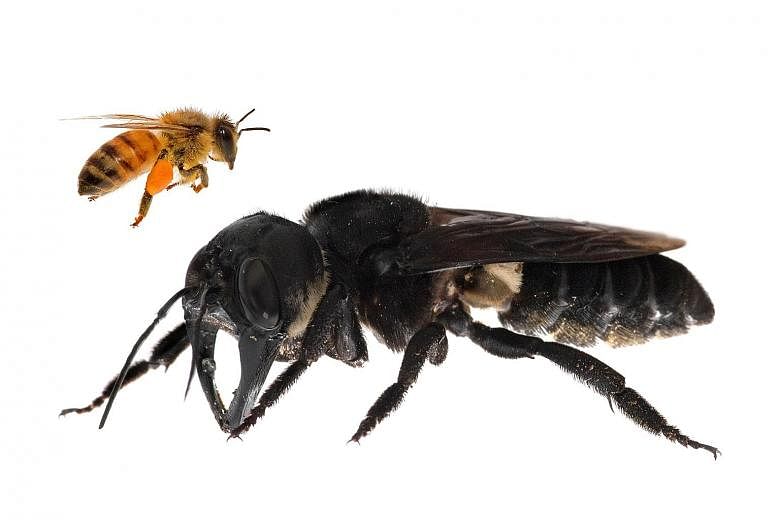CANBERRA • The world's largest bee, which had not been seen since 1981, has been rediscovered in Indonesia, scientists said.
A team of conservationists and international scientists found the first specimens of Megachile pluto, commonly known as Wallace's giant bee, in Indonesia's North Moluccas islands last month.
On Thursday, they released photographs and videos of a nest and its queen, saying their find was the "holy grail" of species discoveries.
The discovery reignites hope that more of the region's forests may be home to this very rare species, said the team, which includes researchers from the University of Sydney, Saint Mary's University in Canada and Princeton University in the United States.
Female specimens of the bee can reach a length of 3.8cm and have a wingspan of more than 6cm.
Males grow to about 2.3cm.
"It was absolutely breathtaking to see this 'flying bulldog' of an insect that we weren't sure existed anymore," said Mr Clay Bolt, a natural history photographer, who took the first photos of the giant bees alive.
"My dream is to now use this rediscovery to elevate this bee to a symbol of conservation in this part of Indonesia," he said.
The insect is named after British naturalist Alfred Russel Wallace, who formulated the theory of evolution by natural selection before Charles Darwin's published contributions. Wallace collected the species for the first time in 1858 while exploring the Indonesian island of Bacan. The bee was thought to be extinct until it was rediscovered in 1981 by American entomologist Adam Messer, who found six nests on the island of Bacan and two other nearby islands.
It had not been seen again since.
Global Wildlife Conservation, a Texas-based non-profit organisation that runs a Search for Lost Species programme, put Wallace's giant bee on its list of the "25 most wanted lost species".
Researchers say forest destruction in Indonesia for agriculture threatens the habitat of many species.
DPA


